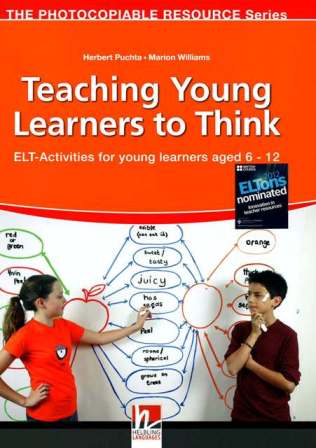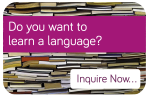Anyone with experience in teaching young learners knows that one’s teaching approach needs to be modified when dealing with specific age groups. A dynamic and hands-on approach which keeps the class engaged and mentally stimulated is perfect for dealing with a class full of young learners. The book Teaching Young Learners to Think offers some resources which can help teachers effectively tackle such a situation.
The beginning of the book is quite lengthy since the authors decide to go on a bit of a tangent as they answer the question “what is involved in the thinking process?” I recommend skipping this part unless you are a teacher trainer and would like to delve deeper into this subject. After flipping through these initial pages, a series of 80 activities which are divided into 13 sections can be found. In terms of language level the activities range from beginner to pre intermediate, but I would recommend only using these activities to prepare your beginner students to move on to the next level. Each section usually has around 8 activities which work on visual problem solving activities, exercises where students are encouraged to get up and move, memorization activities, and guessing games.
The content will appeal to both experienced and inexperienced teachers who have students between the ages of 6-12. For teachers who do not have much experience the book also offers a reference guide at the end of the book which helps in choosing activities related to specific subjects. Each activity also comes with teaching notes which give clear and easy instructions on how to deliver a lesson.
"This book provides very useful resources to break away from the routine and give your students engaging activities that will get them thinking."
What may seem like playful activities to your students are actually exercises that help them build up their vocabulary and descriptive language skills. Games such as “A spy among us” which comes with picture cut outs, help young learners ask questions, describe people, and come to conclusions by listening and understanding certain clues which are given to them. A number of other activities which focus on riddles, number games, and role play exercises can be found in this book. Many of the activities even relate to real life situations such as choosing gifts for friends, picking out clothing, and relaying information to other people (perfect for reported speech). This book provides very useful resources to break away from the routine and give your students engaging activities that will get them thinking.
The book labels itself as a “photocopiable resource” but even though this is true, I feel that the book offers something more. The book does indeed have many great activities which can be photocopied and printed, but there are also many sections throughout the book that offer tips and pieces of advice to teachers. One section in particular that caught my attention was one that focused on dealing with students with short attention spans. There was a brief analysis of the problem and a description of the typical young learner with this type of behavior, but following the description were a series of activities that helped fix this issue. Having worked with a number of books for young learners, it is very impressive to see a book offer activities to deal with this common dilemma, especially since very few books focus their attention on this issue.
.jpg)
The only thing I would have liked to see in this book would be a bit more organization with the activities. Certain exercises are only appropriate for specific ages and I feel that it would have been very convenient to label each activity by age and level in the index of the book. This would be a very useful tool for many of us busy teachers, but aside from that the book is very well put together.
Teaching Young Learners to Think is an activity book that does just what its title says. I recommend this book to both teachers with experience and those who are barely starting out. Not only will your young learners be learning English, but they will be breaking away from the typical classroom exercises by participating in speaking exercises, using their imagination, and developing problem solving skills which will benefit them in later years.




.jpg)